[French Quadrilles - squares]
1. Ballroom dance of the 18th - 19th centuries. The musical size is 2/4, usually interspersed with sizes 3/8 or 6/8. The pace is lively. Arose at the end of the 18th century on the basis of. It got its name due to the square construction of dancing couples. Every two or four pairs form a square and dance within their square. There are many variations of Quadrille, each of which usually consists of 5-6 figures with their own names. The most famous varieties:, Ballroom Quadrille,. Another name: Ballroom Quadrille.
2. A kind of folk dance that arose in the 19th century on the basis of the Ball Quadrille and spread in a number of countries, including Russia. The musical size is 2/4. It consists of a series of dance figures, which can be safely called "flirting", as in them a man dances with each woman in a circle.
3. A characteristic dance in ballroom dancing on ice. Performed by one or two pairs, using the figures of the folk version of the Quadrille dance. In the starting position, the dancers stand at the corners of the ice platform.
In medieval Europe, they tried to give aesthetic meaning to simple geometric forms. For example, armed riders at a knightly tournament were divided into four squads, each with its own emblem, clothing colors, musicians, etc. The squads stood in a square structure on the sides of a large field, representing a very colorful sight. Apparently, on this basis, in the XVII century, a square system penetrated the ballroom. They began to use it in dance compositions.
In 1740 appeared in France new dancewho continued the counter-dance tradition. His composition was designed for two or four couples who danced exclusively in their square [frants. Quadrille]. Since many such squares were formed at the same time in the hall, the dance was given the name “Quadrille” [French Quadrilles- squares]. It is customary to translate this name into Russian in the singular - Quadrille.
The original Quadrille was a suite of five with various figures and at different musical paces. Later, these five turned into five square-dance figures, to which the sixth was later added. The dance became especially popular in France during the time of Emperor Napoleon I, and from there it spread throughout Europe. The audience liked it so much that they began to remake popular songs and opera arias in dance tunes. For example, at one time, the figures of Kadrili were performed to completely non-dance fragments from Wagner’s opera Tristan and Isolda.
Unlike where the couples are located nearby, in the Quadrille, the dancers are arranged crosswise to each other. The distance between opposite pairs is no more than five steps. The number of pairs is always even. The quadrangular construction of the dancers is called the "square" [French. Carre]. Before the dance starts, the eight-sixteen bars are played. It is a signal for couples to take their places. Each new figure is again followed by an introduction of eight measures. Performers at this time bow to each other.
In such a complex dance, ballroom rules must be carefully observed. For example, an invitation to a lady should be made before the music begins. Moreover, the gentleman must take care of the selection of the couple in advance, find free space in the hall, as well as chairs for his lady and lady. It is accepted before the start of Quadrille to introduce the ladies to each other, if they were not already familiar.
During the 19th century, the Quadrille became more complex. Combo versions appeared. In the early 1840s, in the wake of popularity, Kadril Polka appeared [French Quadrille- Polka], then in 1845 - Quadrille-Mazurka [French Quadrille- Mazurka], and a little later - [French Valse- Quadrille]. In these compositions, a popular dance, indicated in the name, was inserted after each figure of a regular Quadrille.
Watch the video - one of the options of the Ball Quadrille of the late XIX century:
The complex figures of Quadrille were gradually fed up with the Europeans. In the second half of the 19th century, a simpler type of dance, called. In another way, she was also called Quadrille in the Court Style [French Quadrille à laCour]. However, the Ball Quadrille continued to dance until the 1910s. Moreover, a variation of it appeared under the name [French QuadrillesMonstre- letters. “The monstrous Quadrille”]. The latter was characterized by the inclusion between the figures of the usual Kadrili full versions of other dances, due to which the total execution time increased.
The quadrille left the dance halls only with the advent of the Jazz era. But not completely gone, but as worthy ballroom danceeasily "went to the people." It has spread among the common people of many countries in Europe and America. In many places, it acquired an original national character, but everywhere it retained the compositional feature of the square pairing. So, for example, the American varieties of Cadrilles got the name [Eng. SquareDance - square dance]. In Russia, numerous variants of the popular Quadrille are also widespread: Eight, Kadrel, Semera, Four, Six, etc.
Watch the video - a modern version of the Ball Quadrille:
Watch the video - folk version of the dance (Borskaya Quadrille):
Some dances of world culture, having acquired certain distinctive features, have become widespread not only in their homeland, but also outside it. The quadrille also belongs to such people - it used to be a salon and once spread among the people.
Certain changes have occurred in movements and in the manner of performance for today, but the main compositional features of this peculiar historical dance have survived to the present day.
Dance history
Few people know that the quadrille is But there is another version, according to which it originally appeared at the end of the 17th century in England and had the name "countertance". born among the peasantry. There is another opinion about the origin of the name. Its essence is that the performers are located against each other, and the word "contre" from French is translated as "against." He became especially popular with several couples in France, and the name was given to him “quadrille”.
After decades, the dance became very popular and appeared in almost the entire European territory, including Russia, where its wide distribution began in the 19th century. Caught in an unusual atmosphere, the French quadrille incorporated real Russian traditions. Some differences were noted depending on the geography of distribution: in various regions, this magnificent dance was given movements that were characteristic only of local traditions. For example, in some regions, when it is performed, kisses are present.
Quadrille is a dance that was even presented at the assemblies of Peter I at the beginning of the 18th century.
Having conquered the visitors of the highest salons and spectators of the dance halls, the square dance quickly began to spread among the common people and turned into one of their favorite dances.
Previous figures began to be processed, modified, and new ones began to appear. All these changes provided this truly folk dance with a long life.
Name History
The dance name “quadrille” clearly has common roots with the French “quadrille”, with “cuadrilla” Spanish and with “quadrum” Latin. In this regard, doubts arise about the country in which this dance arose.
Nevertheless, historical sources confirm the origin of the French, originally as a ballroom dance, formed from the English counter-dance. The latter was danced by peasants in England as early as the 17th century, and the quadrille itself had already spread to France, and then to other European countries in the 18-19th centuries.
Description
Quadrille is a lively, fast dance. Previously, couples were located opposite each other, in a quadrangle, and alternately performed their parts. Moreover, the dance consisted of five figures, which always ended with the general movement of all couples.
Despite the complexity of the figures, the movements were perfectly worked out and perfected by salon dancers. 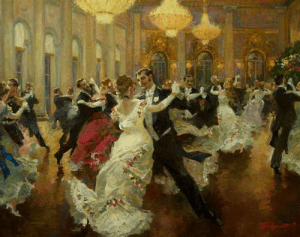
The quadrille has changed a lot over time, and the names of the movements, many of which have disappeared, have simply been replaced by numbers. Some movements have been simplified.
Types of quadrille and their features
Folk quadrille is a dance that has many varieties: Russian and Lithuanian, Ukrainian, Latvian, Estonian, Belarusian and even American. All of them are distinguished by diversity and identity. 
In addition, local options may exist. For example, a quadrille Russian can be called Ural, Moscow and Volga.
The Ukrainian quadrille is composed of many figures, reaching 12 in number.
The Belarusian quadrille is a complex of simplicity with a variety of constructions. The total number of figures is from 4 to 12. Distinctive in the Belarusian quadrille is the inclusion of soloing, either separately or in pairs.
Russian variety of quadrille
It should be noted that the later appeared genre of ditties was rather closely intertwined with this fun dance. What does it look like? Performers during the dance can sing ditties in any order: all together, singly or in pairs. Often, the square dance is performed to many famous songs. 
Russian quadrille is a dance with a peculiarity associated with an increase in the number of dancing couples and with the fact that in some elements a dance has appeared and each successive figure is separated from the previous movement by stopping the movement simultaneously with the music.
The Russian quadrille represents the following three groups in the form of their construction: angular or square, double-row or linear and circular.
Russian folk dance the quadrille has several figures with its own names: a penetration, an asterisk, acquaintance, a collar, etc. They are either declared the leader, or a sign is given by the inflow or handkerchief for their execution.
Thanks to the combination of amazing arrogance and simplicity, the quadrille firmly established itself in the culture and life of the Russian people. This dance has absorbed many national traditions. Thanks to this, he changed greatly, compared with its original form - a quadrille from France.
The history of ballroom dancing
Term “Ballroom dance" comes from the Latin word ballare, which means “dance”. In the past, ballroom dancing was like a “social dance” for the privileged, resulting in “folk dances” for different sections of the population and classes. Gradually, of course, all these boundaries were erased.
The term "ballroom" refers to the pair of unprofessional secular dances that arose in medieval Europe. Ballroom dancing in the process of evolution has changed very much - and each subsequent era of European history - Renaissance, Enlightenment, Classicism, Romanticism - introduced new nuances and details. Each era gave rise to a kind of dance complex.
Ballroom dance arose in the 15th century in Italy, then spread to France, which in the 16-17th centuries became its legislator.
Initially, Ballroom Dance did not have a clearly defined form. Dominated by the so-called low dances (bass-dance), with bows, curtsy, salutes, often in the form of processions with candles and torches, accompanied by singing dancing or playing the lute, flute, tambourine, harp, trumpet. Through the art of jugglers and truvers, folk dances, adapted to the stiff etiquette of the court, gradually penetrated the balls.
 In the 17th century, Ballroom dancing spread throughout Europe. In each country, they acquired a national style, modified and enriched. The popular dances were burr, gavotte, allemand, chacon, gig, saraband. The dominant position was occupied by the minuet. In 1661, the Royal Dance Academy was founded in Paris, which regulated the style and manner of performing Ballroom dancing (ceremonial, prohibition of improvisation, following a certain order depending on the rank of the dancers, etc.). They studied ballroom dancing with special teachers or in dance schools.
In the 17th century, Ballroom dancing spread throughout Europe. In each country, they acquired a national style, modified and enriched. The popular dances were burr, gavotte, allemand, chacon, gig, saraband. The dominant position was occupied by the minuet. In 1661, the Royal Dance Academy was founded in Paris, which regulated the style and manner of performing Ballroom dancing (ceremonial, prohibition of improvisation, following a certain order depending on the rank of the dancers, etc.). They studied ballroom dancing with special teachers or in dance schools.
In the 18th century, new, more free dances spread: paspier, muset, rigodon, counter-dance, ecosses, and landler. If in the 17th century balls were held only in an aristocratic society, then from the beginning of the 18th century public paid balls became increasingly important. The first such ball was held in Paris in 1715. And in 1797, 684 were already arranged. In 1768, the first special room for balls, called english word Vauxhall, signifying a place of public entertainment. After the French Revolution, Ballroom dancing began to lose its aristocratic and majestic character. Rhythmically vibrant, natural dances spread - a tambet, matredur, various French quadrille, lansier, landler, gallop, cancan, polka, Mazurka, polonaise.
Since the mid-19th century, the most popular Ballroom Dance has become the waltz (with its many variations), replacing the gavotte and the minuet. The history of the waltz is inextricably linked with the work of Viennese composers - J. Lanner, I. Strauss-father and son. In Vienna, numerous balls are organized on a professional basis (Laundress Ball, Confectioners Ball, etc.).
Since the late 19th and early 20th centuries, the countries of North and South America had a significant impact on the development of Ballroom dancing. Dances appeared: Waltz-Boston, Tustep, Vanstep, Blues, Foxtrot, Quick Step, Charleston, etc.
In the 20th century, Boston, tango spread, and after the 1st World War, rumba, samba.
Polonaise
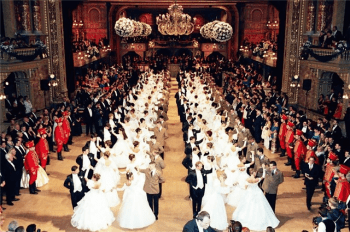
Polonaise (Polish polonez, French polonaise, from French polonais - Polish) - a moderate-rate solemn dance procession of Polish origin. It was performed, as a rule, at the beginning of balls, emphasizing the sublime character of the holiday. In the polonaise, dancing couples move according to the geometric shapes established by the rules. The musical size of the dance is ¾.
Dance History:
http://historicaldance.spb.ru/index/articles/general/aid/332
Video:
Minuet
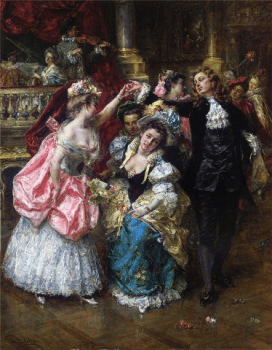
Minuet (French menuet, from menu - small, insignificant) - an old folk French graceful dance, so named because of its small pa. Derived from the slow folk dance of the province of Poitou. It is written in a two-knee warehouse, in a three-share size (3/4). Since the middle of the XVII century - the ballroom. Since the 17th century it has spread widely throughout Europe.
Dance History:
Video:
Mazurka
Mazurka (from Polish. mazurek) - Polish folk dance.
The name comes from the inhabitants of Mazovia - the Mazurs, who first appeared this dance. The musical size is 3/4 or 3/8, the tempo is fast. Frequent sharp accents shifted to the second, and sometimes to the third beat. In the XVII century, Mazurka entered the cycle of Polish peasant dances. In the 19th century, it spread as a ballroom dance in Europe.
In fact, behind the name “Mazurka” 3 national Polish dances are hiding right away. The first of them is masuria (see above). Oberek is a variety of masur with a more whimsical rhythmic pattern and a characteristic emphasis on the third beat of every second measure. Kuyavyak - lyrical, slow mazurka, three-partedness is close to waltz; meditation dance or dance dance.
Mazurka played a huge role in the process of establishing the identity of Polish musical culture. Mazurka in classical music is most closely associated with the name of the Polish composer F. Chopin, who wrote more than 60 mazurkas. For him, the true son of the Polish people, the mazurka was like a page from a personal diary, in the mazurka he spoke out as an artist and a man deeply loving his homeland.
Chopin’s Mazurka is always chamber, in contrast to his Polonez - dancing on a large scale, large form. The composer uses the characteristic features of all types of mazurka, often combining them in one work. Chopin himself divided his mazurkas into 3 main types: rural sketches-pictures ("images"), urban (shiny) and lyrical mazurkas. The acute rhythm, emphasis, dashedness, whimsical rhythmic pattern, folk frets (in particular, Phrygian and Lidian, as well as Hungarian gamma and major minor), subdominant (plug-in) sphere of harmony are always characteristic. The dramaturgy is bright, conflicting; in one mazurka several contrasting episodes can be combined.
Video:
Gallop
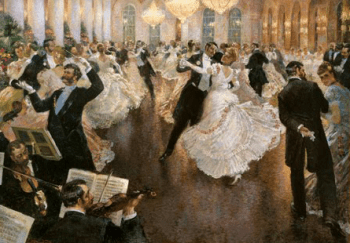
Gallop (dance) - fast ballroom dance, popular in the XIX century. Performed in a rapid spasmodic movement.
This is a ballroom dance that arose in France at the beginning of the 19th century, and then began to spread throughout Europe, this dance became especially popular in Germany. Of course, there is a theory that the gallop actually originated in Germany, and then became popular in France. But I consider the first fact more true, since the name of the dance is consonant with the French word “galoper”, which means “to jump” in translation. Most likely, the word “galoper” became the prototype of the name.
In fact, the word “jump” is incredibly suitable for the dance itself. So, the kind of dance Gallop is a quick dance, it is danced by a large number of people who are divided into pairs. These pairs move strictly in a circle in spasmodic movements.
The gallop itself is very similar to another fast and massive dance, it is called polka. This is not surprising, because the gallop itself is one of the elements of polka.
This dance has become very popular in the works of classical music: the gallops of Strauss and Liszt stand out the most.
Video:
Quadrille

Quadrille (French. Quadrille) - French dance, which is a kind of counter-dance and arose at the end of the XVIII century. and very popular until the end of the XIX century. in Europe and Russia.
Performed by two or four pairs, located on a quadrangle (FR. Quadrille), against each other. The quadrille developed from rural dance and initially contained five figures.
The quadrille often uses well-known tunes for 2/4 or 6/8; they are often borrowed from operas or operettas, for example from Johann Strauss's operetta The Bat.
Dance History:
http://hnb.com.ua/articles/s-sport-entsiklopediya_tantsa_kadril-2544
Video:
Polka
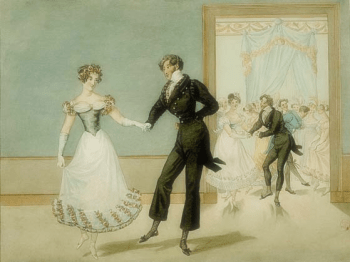
Polka - A fast, lively Central European dance, as well as a genre of dance music. The musical size of the polka is 2/4. Polka appeared in the middle of the XIX century in Bohemia (modern Czech Republic), and since then has become a famous folk dance.
Polk was written by Johann Strauss I and his son Johann Strauss II. This genre is often found in the works of Czech composers - Bedřich Smetana, Antonin Dvořák and others.
At the beginning of the 20th century, it was assumed that the name of the dance came from the Czech word půlka, meaning "half step", since the rhythm of the polka requires a quick move from one foot to another. This theory is currently considered erroneous. Polka is often considered Polish dance, which is not true. In addition, do not confuse polka with Swedish Polish dance (polska, 3/4).
Polka appeared in Russia in 1845. This dance - then very fashionable in France - brought from a trip to Paris the famous dancer of the imperial troupe of St. Petersburg Nikolai Osipovich Golts; he put it on the stage, and then distributed it in the high society of St. Petersburg, and the high aristocratic light soon danced the polka at balls and salons.
Video:
Waltz
Waltz (fr. valse) - the general name of ballroom and folk dances of musical size 3/4, performed mainly in a closed position. The most common figure in a waltz is a full turn in two measures with three steps in each.
For the first time, a waltz became popular in Vienna in the 80s of the 18th century, and in subsequent years spread to many countries. Waltz, especially with closed positions, has become a model for creating many other ballroom dances. Later, many varieties of waltz were created. Mostly danced at balls.
The history of the waltz
A waltz is not an old dance at all in comparison with other types, for example, with a chime. His age is no more than two centuries. Unfortunately, no one can determine the exact origin of the waltz, only speculations exist.
So, according to one version, its German ancestor is the fast Walzer. Another version suggests that the waltz dates back to the landler - a three-part dance of Austrian and German peasants, dancing in pairs and in a circle. It contains all the elements of the future waltz - movement in a circle, partner touching the waist of a lady and much more.
The waltz gradually changed and smoothly reached the aristocracy. After an instant wave of popularity, the waltz was criticized by the church. He was called "vulgar," "lecherous," violating all accepted moral standards. This attitude to the waltz was observed in Europe, and especially in the then prim England.
At the same time, the bourgeoisie joyfully accepted this German dance. He was popular among citizens in socialites. So, by the end of the 19th century, the waltz became a full-fledged dance at court balls. Queen Victoria herself, an amazing lover of waltz, also contributed to his popularity.
Video:
Quadrille - pair dance, once a salon, eventually spread among the people, modified in movements and manner of performance, but retaining the compositional features of historical dance
As a folk dance, the square dance has many varieties: Russian and Ukrainian, Belarusian and Lithuanian, and even American (square dance, which means "square dance"). Each of the options is distinctive and diverse.
History of occurrence
The name "quadrille" has common roots in French (quadrille), Spanish (cuadrilla), Latin (quadrum). This may raise doubts about which country is the birthplace of dance. However, historical sources confidently argue that the quadrille arose in France as a ballroom dance, formed from English counter-dance. English peasants danced counter-dance in the 17th century, and the quadrille spread in the salons of France and other European countries in the 18th-19th centuries.
Couples of dancers were arranged in a quadrangle opposite each other and alternately performed their parts. The square dance consisted of five figures, each of which ended with a common movement uniting all the dancers.
At first, the figures were quite complex and were called Le Pantallon (Pants - by the name of a famous song), L "été (Summer), La Poule (Chicken - also in connection with the song), La Pastourelle (Pastoral) and Finale (Final) with inclusion in dance master Trenitsa of a figure named after him La Trénis. Despite the difficulty in mastering the figures, the movements had to be perfectly worked out and perfected by salon dancers. Over time, the square dance changed a lot, the names of the figures were replaced by numbers, some movements disappeared, others were simplified .
Having conquered the visitors of salons and dance halls, the quadrille began to spread among the people. This process was especially characteristic for Russia - the quadrille danced even in the assemblies of Peter I at the beginning of the 18th century. Gradually, she went into a folk environment, where she greatly changed, acquired a national character and became one of her favorite folk dances. The old figures were processed, new ones were composed, which took into account the features and dance style in each individual locality. These changes made to the folk dance, and provided quadrille long life.
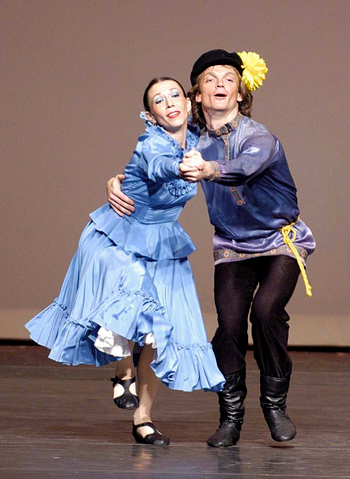 What is a quadrille?
What is a quadrille?
The square dance's musical size is 2/4, sometimes 6/8. Performed by an even number of pairs. In the quadrille, there can be from 5 to 12 figures and a characteristic composition. However, when describing this dance, one should clearly understand what kind of quadrille is in question.
Types of quadrille and their features
There are many types of square dance as a folk dance: Russian, Belarusian, Ukrainian, Lithuanian, Estonian, Latvian, etc. Inside the species, there may still be many local variations, for example, the Russian quadrille can be called Moscow, Volga, Ural, or, as in the northern regions of Russia, four, six, eight.
Russian quadrille
The Russian quadrille has diverse forms and principles of construction, as well as quite complex in composition and technique.
Three groups of quadrille can be distinguished by the form of construction:
1. Square or corner, where the pairs are on the sides of the square (there are usually four) and the movement is carried out crosswise or diagonally.
2. Linear or double-row, in which up to 16 pairs and even more can participate. The composition of the linear quadrille is characterized by the movement of two lines of dancers towards each other.
3. Circular - they dance 4, 6 or 8 pairs. The movement is carried out in a circle, sometimes to the center of the circle and back to the big circle.
The figures in the Russian quadrille can have names associated with the nature of the movement performed or the dance pattern: penetration, acquaintance, cool, asterisk, collar, etc. There are pauses between the figures. The figures are announced as the leader or a sign is given for their execution - a scarf or a trench.
Ukrainian quadrille
The Ukrainian quadrille is composed of many figures, reaching up to twelve, differs to a greater extent by the musical compositions to which it is performed. Most often these are song melodies (“Balamute”, “Oh, don’t go, Gritzu”, etc.).
Belarusian quadrille
The Belarusian quadrille is characterized by simplicity of movements and a variety of constructions, figures can be from 4 to 12. In contrast to other types, the Belarusian quadrille can include solo dancers separately or in pairs. There are quadrille, built on the merger of national dances with the quadrille form: “Goby”, “Chizhik”, “Vrubel”, etc.


